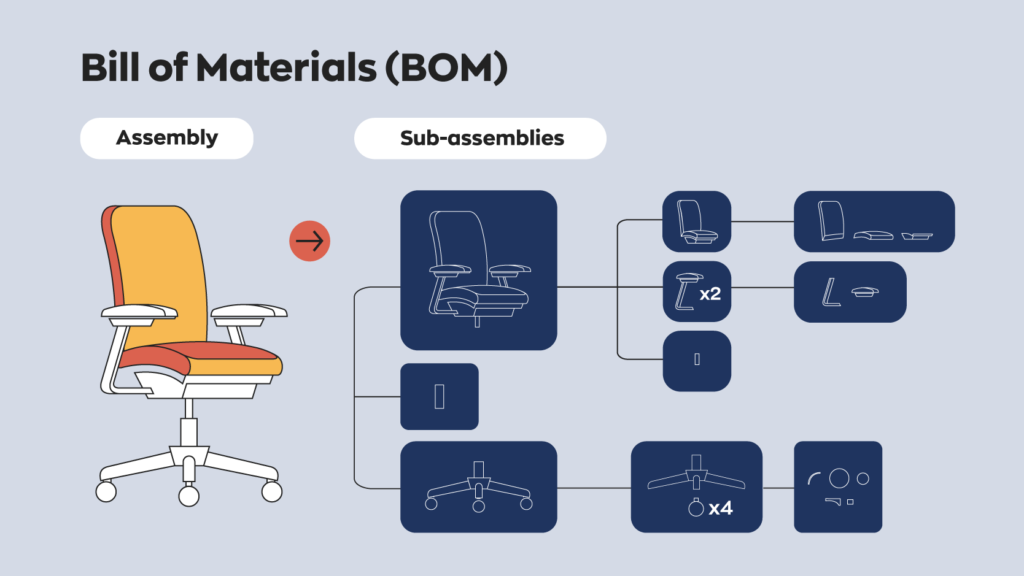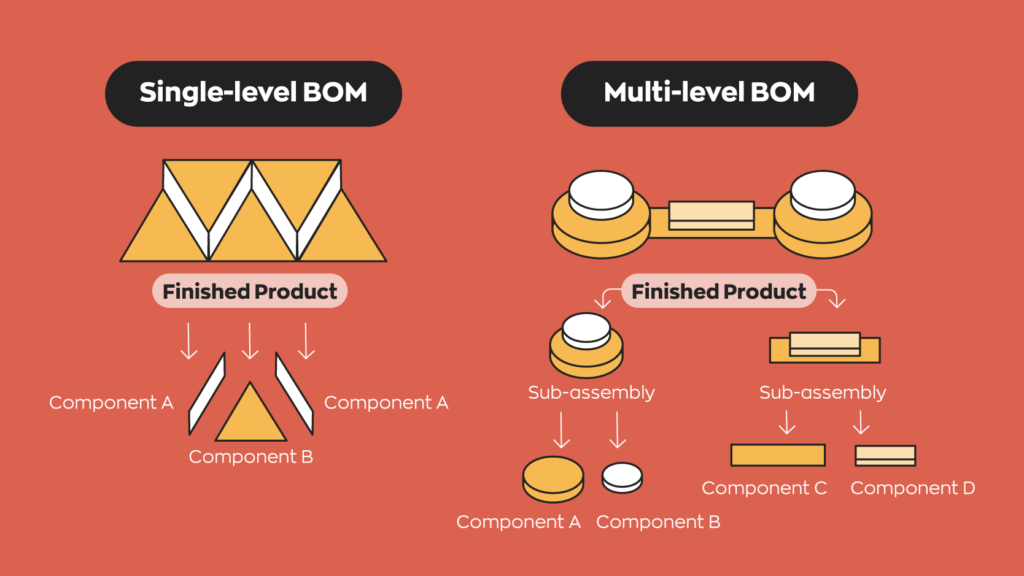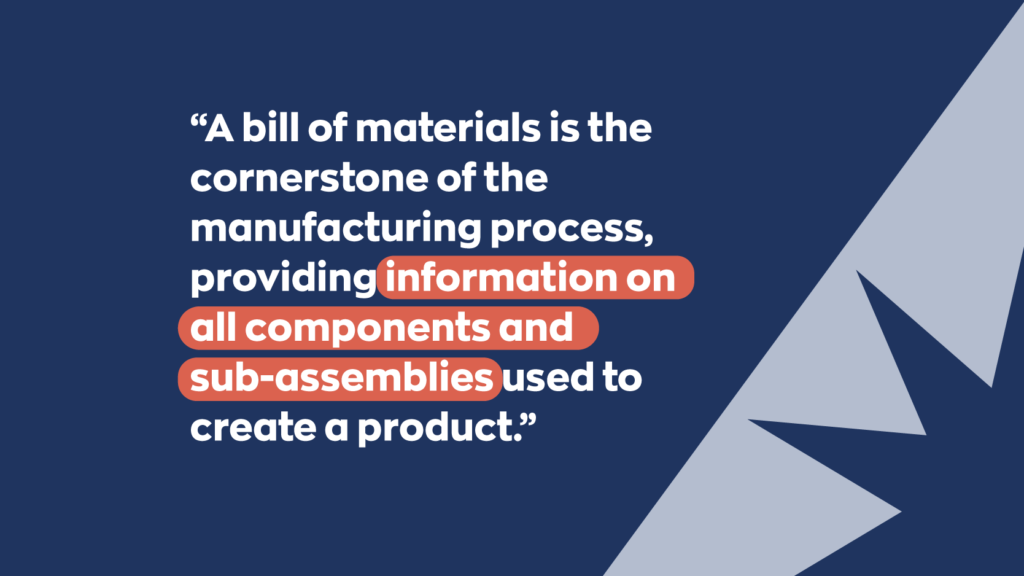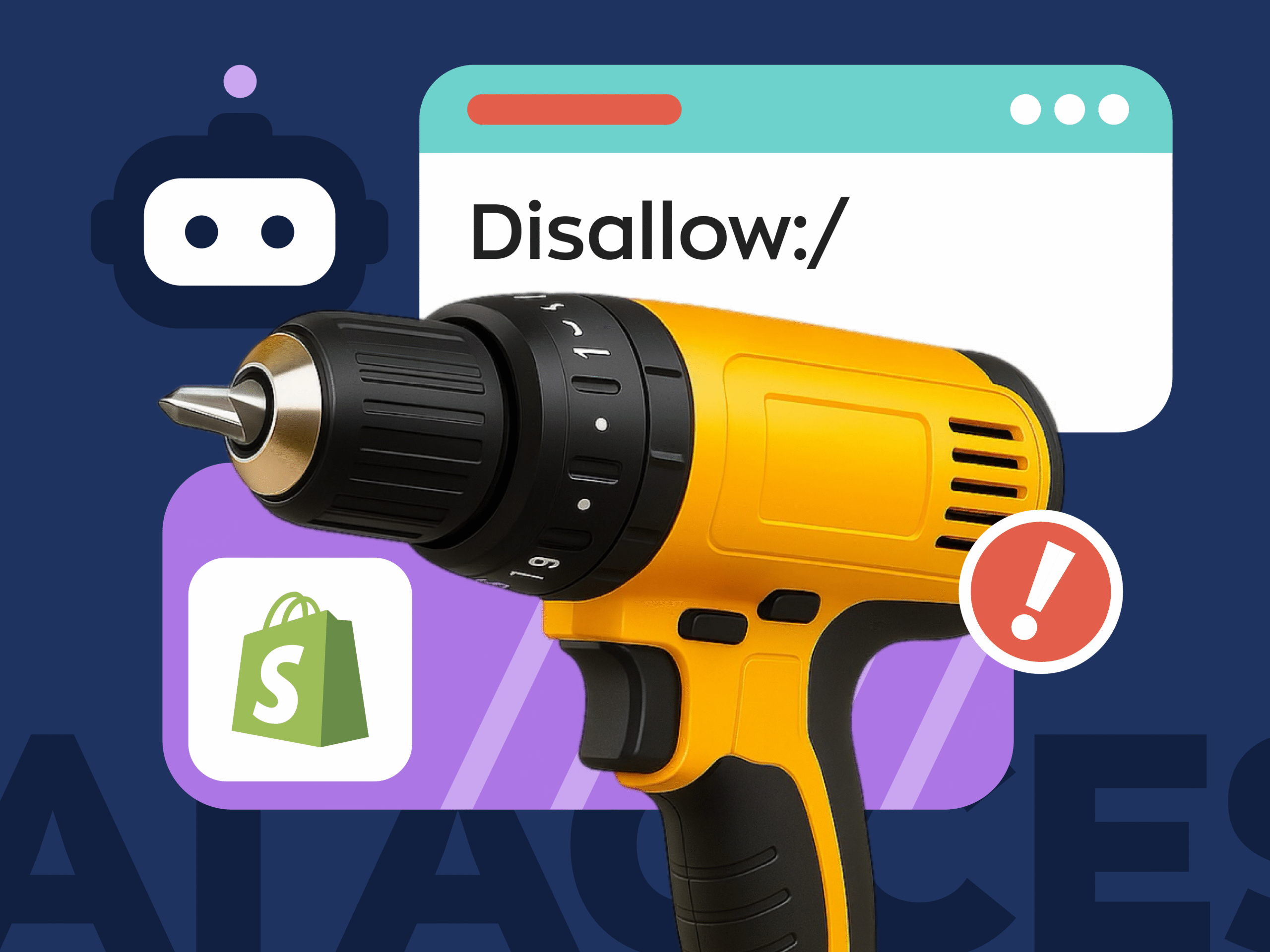- A bill of materials (BOM) is a detailed list of all components, raw materials, and procedures required to manufacture a product.
- Every BOM should include consistent details such as assembly name, material quantities, costs, part numbers, and the general assembly procedure.
- Single-level BOMs are simple and best for straightforward products, while multi-level BOMs suit complex products that involve sub-assemblies and multiple manufacturing stages.
- Common BOM types include manufacturing, engineering, configurable, production, and assembly BOMs, each tailored to production processes.
- Using a BOM helps manufacturers streamline workflows, improve communication between departments, ensure accurate material restocking, and maintain better production control.
- Modern inventory and manufacturing software like inFlow can automate BOM creation and maintenance, reducing manual errors and improving efficiency.
A bill of materials (BOM) is a reference list that manufacturers use to streamline and track their manufacturing process(es). That sounds complicated — and it can be — so it helps to break things down. It’s important to note that there are a lot of different manufacturing processes out there. As a result, there are also a variety of different types of BOMs.
What are the core components of a BOM?
Even in the same industry — and for the same product — things might differ from business to business. At the same time, though, there are almost always a few data points that remain consistent. For a bill of materials to be effective, it should contain detailed information including the name of the assembly, the number of raw materials needed, the cost of those materials, applicable part numbers and required quantities, and the general procedure.

Which bill of materials should you use?
It’s something we say a lot, but it remains true — every business has different needs. This is especially true when dealing with the manufacturing process, and it’s why using the right BOM is important. It’s impossible to tell what businesses need which BOM at a glance, but there are some general guidelines.
A single-level BOM is simple and easy to implement but doesn’t offer much information. At the same time, though, simple is sometimes best. If your assembly process is simple — like, say, building a table — it might be best to use a single-level BOM. It’s simple, gets the job done, and won’t confuse new workers.
A multi-level BOM is a bit trickier. It offers more information at a glance, but also requires much more information to create and implement. It also tends to be larger and more complicated, which can make it difficult to maintain. Multi-level BOMs are best used for complicated processes that require more precise tracking.
Different types of bills of materials
Considering the many industries in the world, it’s probably not surprising to hear that there are a lot of different BOMs. Here are some of the most common types:
- Manufacturing BOMs contain all the parts and assemblies required to build a complete and shippable unit. They also typically include information on how the different components relate to one another. When using a manufacturing BOM, the product is not “complete” until it’s ready for shipping.
- Engineering BOMs are similar to manufacturing BOMs but with one key difference. Unlike a manufacturing BOM, an engineering BOM is “complete” once the unit itself is finished.
- Configurable BOMs are a bit different. Instead of a strict guideline, they’re more of an estimate. They’re meant to be used for products that depend on customer specifications, such as a custom computer build. These are ideal for make-to-order and assemble-to-order workflows.
- Production BOMs focus more on the process rather than the outcome. They still list the raw materials used but tend to go more in-depth on the manufacturing process itself.
- Assembly BOMs are similar to production BOMs but also list the resources used in the process, such as labor and equipment.

Again, there’s no one-size-fits-all solution. Some businesses only need basic information, while others need in-depth documentation. Figuring out which one works for you is invaluable to making sure things run smoothly.
Types of BOM display
Another important aspect of a bill of materials is the way the information is displayed. There are two main options for structuring a BOM: explosion display and implosion display. An explosion display starts with a high-level assembly and then breaks it down into smaller components. An implosion display begins with the smaller components and then links them to the higher-level assembly.
Single-level vs. multi-level bill of materials
Despite there being many different types of BOMs, they all fall into one of two categories: single or multi-level. Which category they belong to depends on whether or not the BOM includes assemblies only or sub-assemblies as well.
- Assemblies are the components that are used to build the end product directly. For example, building a modern computer requires more than one manufacturing round. The components are built in separate places, and then all put together somewhere else.
- Sub-assemblies are the components used to build the components of the end product. For example, a central processing unit (CPU) is part of a modern computer but requires its own assembly process.
In this example, the CPU itself is part of the assembly, and the components used to make the CPU are part of the sub-assembly.
Single-level BOMs only contain assemblies, while multi-level BOMs contain both assemblies and sub-assemblies. Sub-assemblies are placed on different “levels,” hence the name.

What are the advantages of using a bill of materials?
Running a business can be rough. Adding a manufacturing process on top of that can make it even rougher. A BOM is a tool that manufacturers use to make things easier. Here are a few reasons to implement BOMs into your operation:
- Streamline workflow: This is especially relevant when the assembly takes place over multiple departments. Instead of having to check back in with each other, departments can reference the BOM to make sure everything’s on track.
- Provide a clear outline: A BOM tells you exactly what you need and when. This reduces time spent fact-checking and helps ensure that all materials are on hand before the start of the production cycle time.
- Restock easily: A BOM tells you what components you have on hand (and how much), making it easy to know when and what to restock.
Creating and maintaining a BOM can be challenging, but it’s instrumental in staying organized and keeping an efficient workflow. Pairing a barcode system with BOMs will further optimize your workflow and reduce errors.
How do you create a bill of materials?
Like a lot of other things, a BOM used to be created (and maintained) by hand, usually on a spreadsheet of some sort. That’s still possible today and made a bit more convenient through the use of helpful templates. However, over time, a BOM can become difficult to maintain due to the potentially large number of shifting variables. These days, it can be easier to maintain through the use of robust and affordable software that helps to automate BOM management.





0 Comments